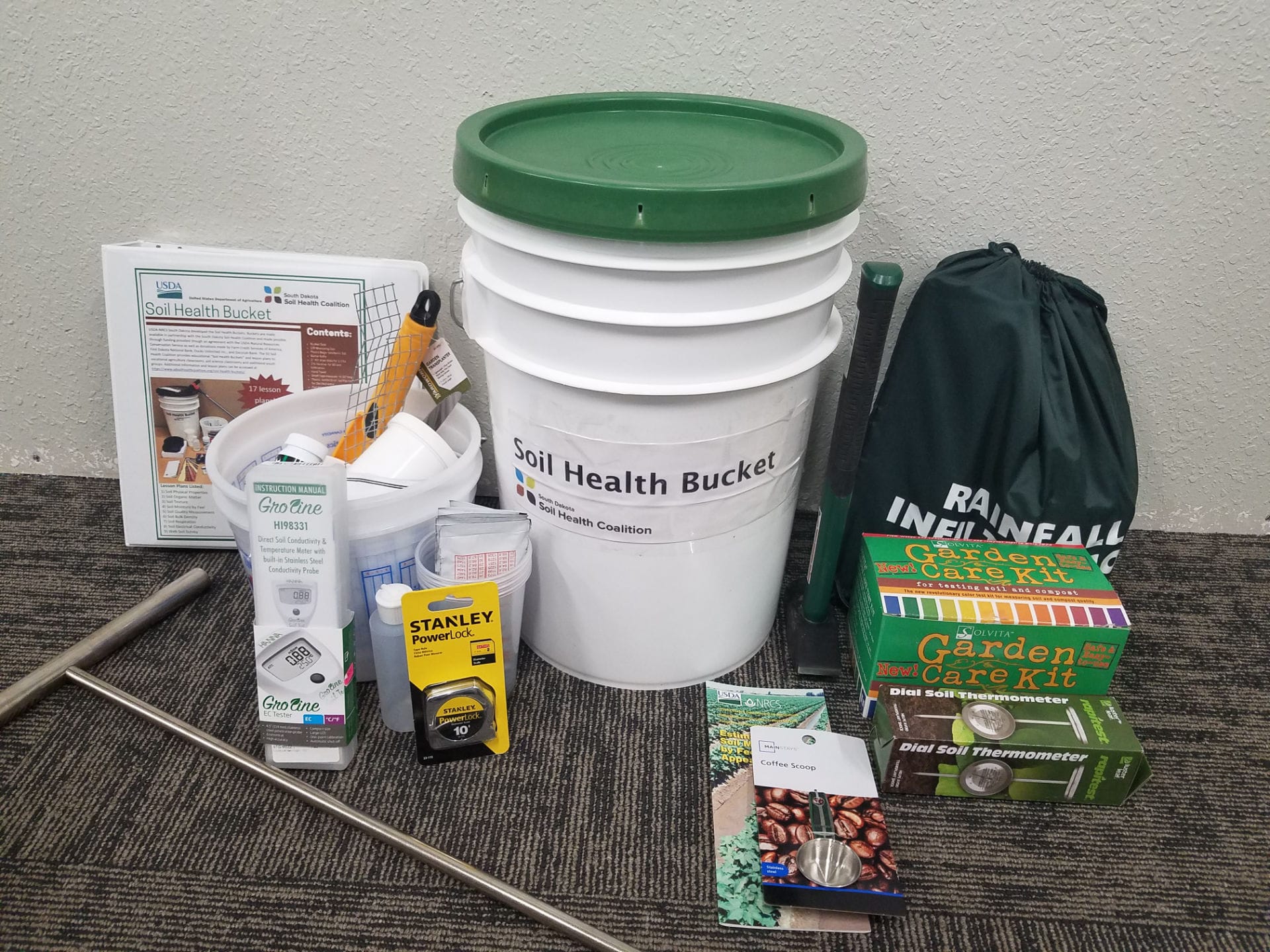By Lura Roti for the South Dakota Soil Health
Handing large containers of water to two students, Mark Misar asks them to begin pouring water over two, loaf-size soil samples. One sample he collected from a no-till soybean field on his farm. The other sample he collected from a conventionally tilled field nearby. As the water runs onto the soil samples and drains into clear containers below, the class sees a dramatic difference. Water running off conventionally tilled soil is murky and full of soil sediment, while the water infiltrating through the no-till soil sample is clear.
“I can lecture to students that no-till management and other soil health practices help with water infiltration and reduce runoff, but will they remember it? When they see something happening, and do something with their own hands, that is the stuff they remember,” explains Misar, a third-generation farmer who teaches agriculture education classes for Bon Homme High School.
The table-top rainfall simulator Misar used for the hands-on demonstration of the movement of rainfall on fields under different types of land management, along with lesson plans and student worksheets, came from a Soil Health Bucket. A teaching aid he received at no cost from the South Dakota Soil Health Coalition, the Soil Health Bucket is filled with 18 accredited lesson plans and tools valued at more than $500, including a shovel, soil probe, pH strips, EC meter, nitrate/nitrite test strips and much more.
“Lots of these tools we would not have access to, and to not have to pay for these tools is very helpful. In small schools like ours, budgets are tight. Like most teachers, I already buy a lot of stuff out-of-pocket as it is,” Misar says. Misar is one of more than 95 South Dakota agriculture education instructors, science teachers and other educators to receive a Soil Health Bucket, since the S.D. Soil Health Coalition began distributing them in 2017. And like Misar, a recent survey showed 92 percent of teachers who use the Soil Health Bucket curriculum in their classrooms found them to be a helpful teaching tool.

0 Comments